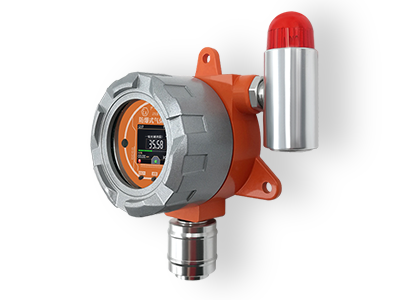What is Fixed Gas Detection?
A fixed gas detection system is installed to provide continuous gas detection 24 hours a day to ensure the safety of the area and personnel. These detection systems are designed to alert workers to the potential danger of exposure to toxic gases and prevent explosions caused by hypoxic asphyxia or flammable gases.

Benefits of Fixed Gas Detection
Protection
A fixed gas detection system protects you and your assets. In addition, it also protects your workforce against asphyxiation, poisoning and explosions/fire.
Fixed gas detection systems connect to building management systems as well as other active safety systems. Relays may be activated to perform a number of functions including activating visual and audible alarms, closing electronic valves and opening/closing ventilation and exhaust fans. This type of automatic system alerts workers in hazardous situations and saves lives!
Continuous Monitoring
Fixed gas detectors provide monitoring 24 hours a day. All areas even when the majority of the time it is unmanned must be monitored to warn personnel of dangerous environments before they enter. Having fixed detection will reduce safety risks on site creating a safer environment, often satisfying insurance policy criteria.
Looking After the Costs
Although it is not a replacement for personal gas detection, a fixed gas detection system can reduce the time in which it takes to assess, manually, a potentially explosive area often reducing man hours and ultimately cost.
Reduced Maintenance
Fixed gas detection systems typically have a long-life and require minimal maintenance. They are often easier and cheaper to maintain than portable gas detection as they are less susceptible to loss and damage. The recommended service and maintenance schedule of a fixed gas detection system is calibration every 6 months with low sensor replacement frequency and cost.
Little training is required to operate a fixed gas detection system and its use is less likely to be affected by misuse or ignorance.
Other Considerations
Every fixed gas detection system is different – A site survey by a qualified installation engineer is highly recommended as there must be consideration for the following;
Gas Hazard
All gases have different molecular weights. The gas hazard must be assessed and the system specified appropriately. When detecting for CO2, the sensor must be positioned below the potential CO2 leak source as the molecular weight is 44 compared to 29 of air and will sink in the atmosphere.
Location
The location in which you are monitoring should be assessed, for example, the air flow. If you are installing fixed point detection sensors, these rely on the gas passing across the sensor, to be detected. Therefore if there is a known, consistent direction of the air flow the gas detector must be positioned “down wind” of the potential leak source.
Alarms
What do you want the fixed gas detection system to tell you? In cases where you are monitoring for explosive gases or oxygen depletion, it is to tell you that there has been a gas leak. As a result, a sound or beacon alarm will provide you with a “SAFE – NOT SAFE” indication controlled by the relay output of the controller.
In cases where you are monitoring toxic gases with average exposure limits STEL (Short-term exposure limit over 15 mins) or TWA (Time weighted average exposure limit over an 8 hour period), you will need data acquisition software to calculate these average over these two periods and ignore safe peaks on concentrations.
Closed Loop
You are able to use fixed gas detection systems to monitor and control an environment. The outputs of the control panel can activate emergency extraction, for example, to ventilate a confined space to reduce the unwanted gases. In some cases, fixed gas detection systems activate to shut down processes as a safety precaution to allow for corrective maintenance.
Choosing the Right Sensor
It is important to know which gas sensor is best for which gas and the application.
 : +86 155 8830 2704
: +86 155 8830 2704 : jxdziot@gmail.com
: jxdziot@gmail.com
